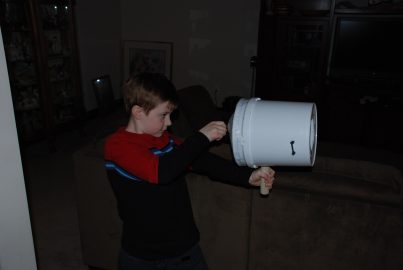Air Vortex Cannon Instructions
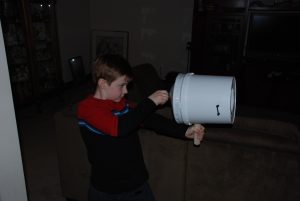
Jason and I made this a long time ago, but I’m updating my site and figured this would be a good first post.
These instructions detail a homemade air vortex cannon. This is very similar to the popular “AirZooka” that can be purchased at many toy stores and science related shops. There is absolutely nothing wrong with the AirZooka, and it works quite well. However, we often find it much more fun to build these things ourselves. The attached instructions are taken from a collection of various instructions found freely on the internet. The only really novel thing about this document is it includes a known set of materials that are proven to work well.
For a printable pdf of the instructions:
Required Material:
- Bucket, 2 gallon (Home Depot, Paint Department, ~$3).
- 2 sq feet of 4 mil thick plastic sheeting (Home Depot, Paint Department, Price unknown as we used leftover scrap material).
- 1 12″ Canopy Tarp Tie (Home Depot, Fastener Department, ~$5 for 8 pieces).
- Packing Tape
- Scotch Tape
- 1-1/8″ hardwood dowel for handle, about 6″ (We used oak. Poplar stripped out)
- 1/4″ thick scrap wood, roughly 1×2″
- 1″ #8 screw, pan head.
Tools used:
- Drill with 6″ hole saw. This is not necessary. You can do this with a compass to mark the circle and a utility knife.
- Scissors
- Home Depot “Homer” bucket. Again, not necessary. We used this to trace a circle. A large compass or other round object will do.
Step 1: Cut a hole about 6″ diameter in the bottom of the bucket…. There’s a hole in the bucket, dear liza…. If you don’t have a 6″ hole saw, just draw a circle with a compass or other round object and cut with a utility knife.
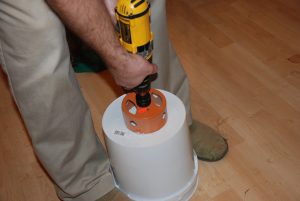
Step 2: Remove any sharp edges with 120 grit sandpaper.
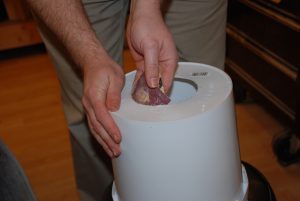
Step 3: Trace a circle in the 4 mil plastic sheeting. The “Homer Paint Bucket” was the perfect size. Yet another use for this amazing item.
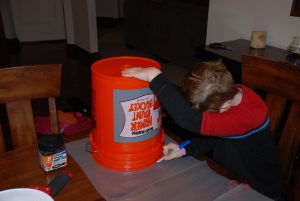
Step 4: Cut out the circle that you just traced. It took some experimenting to find the best scissors to cut this material cleanly.
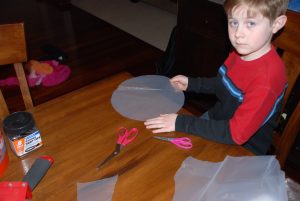
Step 5: Find the center of the circle. We found the best way was to fold it in half twice.
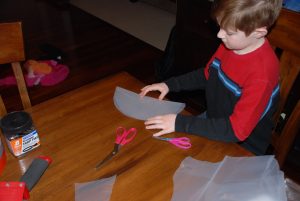
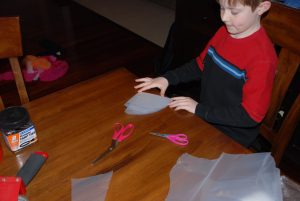
Step 6: Cut a small hole in the center. If you used the approach of folding it in half twice, you would just snip the very tip off. Reinforce the center region with packing tape. We simply put 4 pieces of 3″ long tape around the hole on both sides.
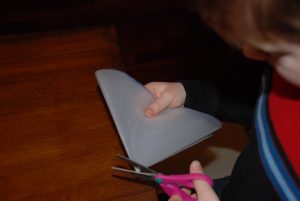
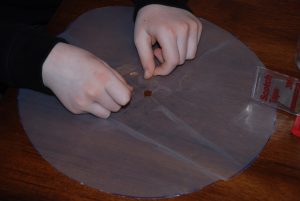
Step 7: Take one of the bungie tie downs and feed it through the hole in the plastic sheeting. Tie a knot in the bungie opposite the ball to hold the sheet in place on the bungie.

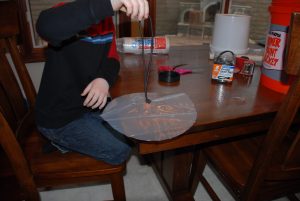
Step 8: Cut the bungie in half.
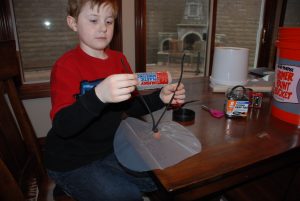
Step 9: Cut two small holes in the side of the bucket near the bottom. We used a 1/4″ drill bit and drilled them 2″ from the bottom. The holes need to be on opposite sides of the bucket for the bungie cord to go through. If you don’t have a 1/4″ drill bit, scissors or a utility knife will do. Just don’t cut the holes too large.
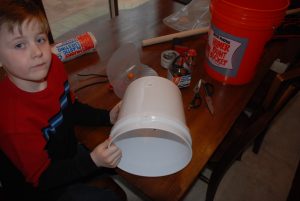
Step 10: Using Scotch tape, we very roughly attached the plastic circle to the bucket. The bungee cord side goes in and the orange plastic ball side goes out. The plastic needs to be attached so that the outer circle of the plastic is approximately at the edge of the bucket. Since the diameter of the plastic circle is larger than the bucket, this results in some bunching up of the plastic. The goal of the tape here is not to necessarily attach the plastic well, but just enough until the next step.
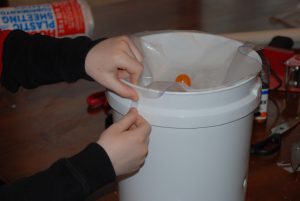
Step 11: Seal the plastic circle to the bucket with packing tape. We ran the tape about 2/3 over the bucket, and 1/3 hanging over the edge. After applying the tape, the 1/3 that was left hanging over the edge was pressed over into the plastic sheet. This helps seal the plastic sheet and better secures it to the bucket.
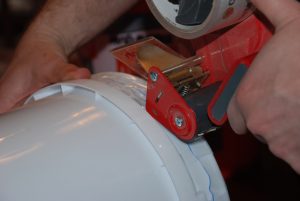
Step 12: Push one end of the bungee cord through the 1/4″ hole in the side of the bucket. Repeat for the other piece of bungee on the other side of the bucket. Tie a knot in the bungee cords on the outside of the bucket. For the size bucket and bungee we used, there was about 1″ of extra material after the knot. You may need to adjust the location of the knot to provide correct tension on the bungee. The cord should be slack with the plastic sheet pressed all the way in the bucket, but in tension when the sheet is pulled back.
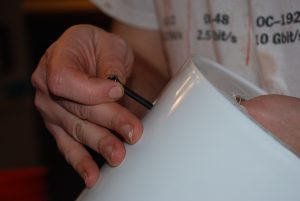
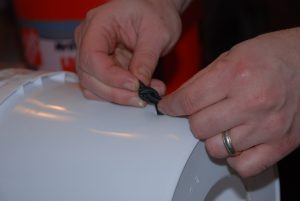
Step 13: We made a handle with a 1-1/8″ diameter, 6″ long piece of birch dowel rod. The handle was attached with a screw through the inside of the bucket. The initial attempt was too flimsy, so we added a thin piece of wood inside the bucket to make it more rigid. The scrap wood was 1/4″ thick, 1″ x 2″ piece. It is attached with a single screw. While this step is last in these instructions, we build more of these and moved this step to before we attached the plastic sheet. This made it much easier to get a screw driver in there.
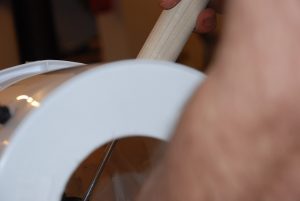
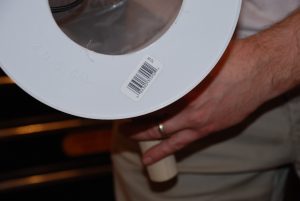
Take aim, pull back on the orange ball/bungee, then release. The air vortex cannon should launch a 6″, relatively focused blast of air.

- Use a fog machine from Halloween, fill the bucket with fog, then marvel as you can launch perfect smoke rings for a good distance. The distance the smoke rings can launch is typically limited by the stillness in the air.
- Hang streamers from a door opening and fire at them to help learn how it aims. It will be a little off from center.
- See how far you can blow out candles.
- Try shooting a balloon through your house.
- Set up action figures and blast them down.
- We built these as a Cub Scout project. The buckets were prepped with handles and holes already drilled and the plastic sheeting pre-cut and taped. A group of second graders assembled with some parental assistance and had a great time. Overall cost for the project was on the range of $4 per person as I already had the plastic sheeting.
- With a little modification, the vortex cannon can be “supersized” by substituting the 2 gal bucket for a 5 gal bucket. This does require a larger circle for the diaphragm, but the bill of materials is the same.
